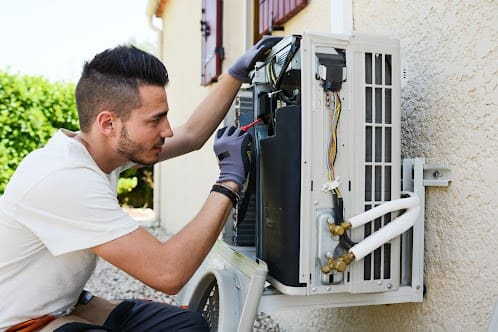
A central air conditioning unit has many elements and parts general homeowners don’t typically think about. If you do own an air conditioning unit, one of the parts you should be aware of is the thermal expansion valve. The valve is exclusively used to regulate the refrigerant pumped into an air conditioner and the superheat that is released.
The part may be small, but it offers an essential function in a central air conditioning unit. Learn about some of the more common problems you will come across with your air conditioning unit and why thermal expansion valve (also known as TXV) repairs are essential for proper air conditioner functions.
1. Blocked Strainer
In any type of cooling or heating unit, cleaning is essential for efficient operations. In a thermal expansion valve, the small size of the valve means that debris can easily get stuck inside and result in poor air conditioner performance. The release of refrigerant could become limited and eventually lead to major problems if not repaired.
A clogged valve is typically easy to fix because many TXV parts will include a strainer that is pulled out without the need to remove the whole valve. With the strainer pulled out and cleaned, the clog issues should go away. If the TXV becomes clogged frequently, an HVAC technician may replace the strainer or install a new TXV that functions smoothly.
When an issue does occur with the TXV, a clog is often ruled out first. The repair time is minimal and an HVAC technician may offer tips to help you prevent clogs in the future. Generally, dusting and keeping the area around the conditioner cleared out will help prevent additional debris in the TXV.
2. Sensing Bulb Malfunction
Another key component of the thermal expansion valve is the sensing bulb. The bulb reads the temperatures of the refrigerant that leaves the TXV. Typically, the sensing bulb is an expanded part of the TXV and is mounted to a pipe on the air conditioning unit. The amount that the vale on a TXV opens up often depends on the readings a sensing bulb makes.
If a sensing bulb malfunctions, then the valve could open up too much or not enough or not at all. There are several reasons why this part may malfunction. The bulb itself could have damage. The bulb mounting could be loose and result in poor readings. The sensing bulb could have a vertical installation instead of a horizontal reading and not properly read refrigerant temperatures.
A full inspection of the sensing bulb will determine what problems actually occurred. Often, sensing bulb replacement will return the TXV function back to normal again. With so many problems that can occur with the sensing bulb, you should not attempt to adjust or repair the bulb yourself.
Ideally, you want to have yearly inspections on your air conditioning unit to ensure the sensing bulb works properly. The inspection will prevent future problems and the need for emergency calls when the air conditioner is not working.
3. Overheating
Overheating of the whole TXV can occur because of the problems mentioned above or just general malfunctions within the TXV. When overheating occurs, too much superheat could get released at once and the performance of the TXV may go down. One of the clear signs of TXV overheating is discoloration.
An air conditioner technician will notice immediately if the TXV had changed colors due to overheating. When discoloration has occurred, there is essentially no reversing the process. A technician will likely replace the whole TXV part and determine what caused the overheating. The extra steps will ensure the problem doesn’t happen again.
Proper lighting in the area will help showcase discoloration. If the area around the unit doesn’t have a lot of light, then a headlamp or flashlight will showcase the colors of the TXV and provide clear visuals.
4. Refrigerant Leaks
The main function of the thermal expansion valve is to limit the amount of refrigerant that goes into the air conditioning system. When the valve malfunctions, a unit may suffer from a refrigerant leak. The leak can lead to multiple issues like poor performance and a lack of cold air. One of the main signs of a refrigerant leak are frosted pipes near the TXV.
Frost is never supposed to appear on the outside of pipes, and in most cases, the whole TXV needs replacement to fix and prevent future leaks. Along with the replacement, technicians will measure the current rates of refrigeration and ensure a unit has enough to properly operate after the leaks.
If any of these problems sound familiar, then book an appointment with us at Steele Bros Heating, Inc. Our air conditioning experts can help keep your system running and avoid any major issues with the TXV. We have an an A+ rating with the Better Business Bureau and put a lot of commitment into customer satisfaction.
